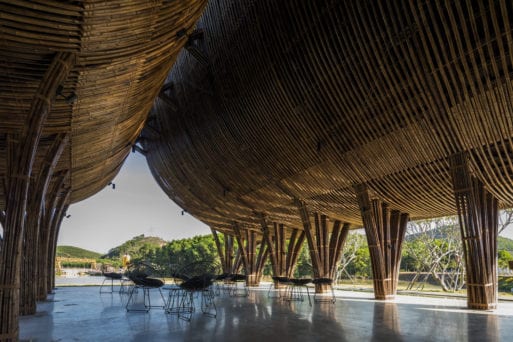
Credit: Hiroyuki Oki
Many cemeteries have a heavy, oppressive atmosphere — and the architects of Huong An Vien Visiting Center wanted to build something different. To design a more tranquil space, they created structures of bamboo and other natural materials, set against the cemetery’s nature-filled grounds near Vietnam’s central city of Hue.
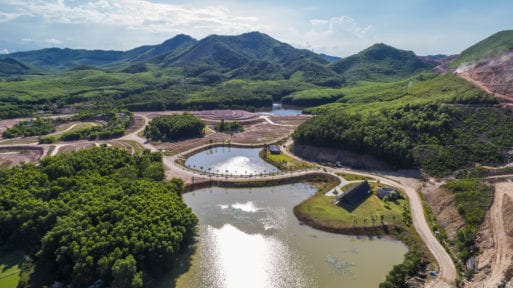
Huong An Vien’s cemetery grounds as viewed from above.
Credit: Hiroyuki Oki
Vietnam is home to many large-scale private cemeteries, with individuals spending thousands of dollars to bury their dead. “We don’t think it matters where we live in life; the grave is our eternal home,” Nguyen Manh Tuyen, chairman of the Lac Hong Vien cemetery in northern Vietnam, told VnExpress International. “That’s why Vietnamese are so concerned about their final resting place.” Burial remains more popular than cremation in Vietnam, with some cultures in the north digging up and reburying their loved ones in a traditional ceremony several years later.
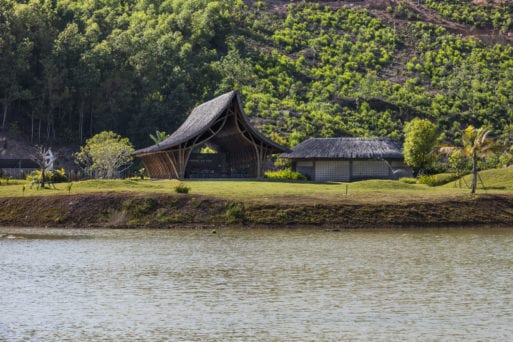
Huong An Vien Visiting Center is situated alongside the Huong River.
Credit: Hiroyuki Oki
Unlike the marble shrines at Lac Hong Vien, however, visitors to Huong An Vien are encouraged to rest and appreciate the natural surroundings. The structure’s curved bamboo roof was inspired by the softness of Hue — a common association for Vietnamese people — and the flow of the nearby Huong River, according to the architects. Meanwhile, Huong An Vien’s setting among four lakes and nearby mountains, as well its abundant flora, provide a light, bright atmosphere for visitors to pay respect at their loved ones’ graves.
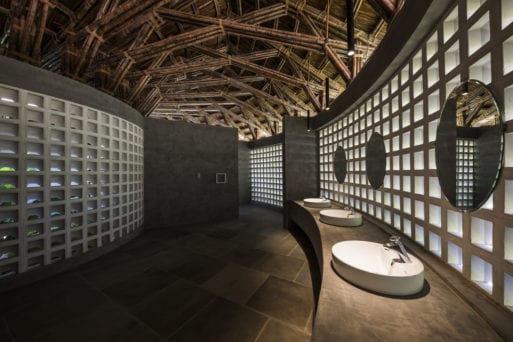
Local materials that provide natural light were used for accompanying buildings.
Credit: Hiroyuki Oki
Adjacent buildings were designed as simple structures of natural and affordable local materials, such as bamboo and thatch, while perforated bricks enable the flow of light and air and eliminate the need for artificial lighting or air conditioning.
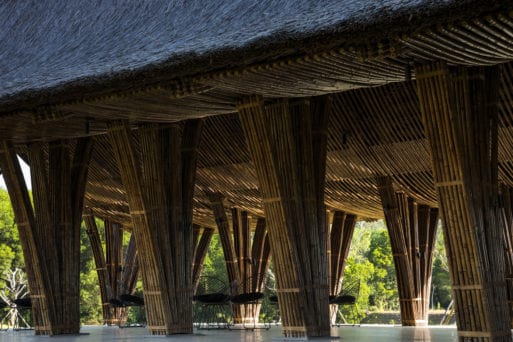
Low eaves protect against the elements while keeping the space open.
Credit: Hiroyuki Oki
“We say ‘trần sao âm vậy’ (as above, so below),’” Dao Ngoc Nghiem, president of Hanoi’s Urban Planning Development Association, told VnExpress International of Vietnamese burial traditions.

 Vietnam’s Peaceful Huong An Vien Visiting Center
Vietnam’s Peaceful Huong An Vien Visiting Center


 John Mulaney’s “Funeral Planning” on Netflix: No Real Plan
John Mulaney’s “Funeral Planning” on Netflix: No Real Plan

 Composting Bodies Is Now Legal in a Dozen States
Composting Bodies Is Now Legal in a Dozen States














